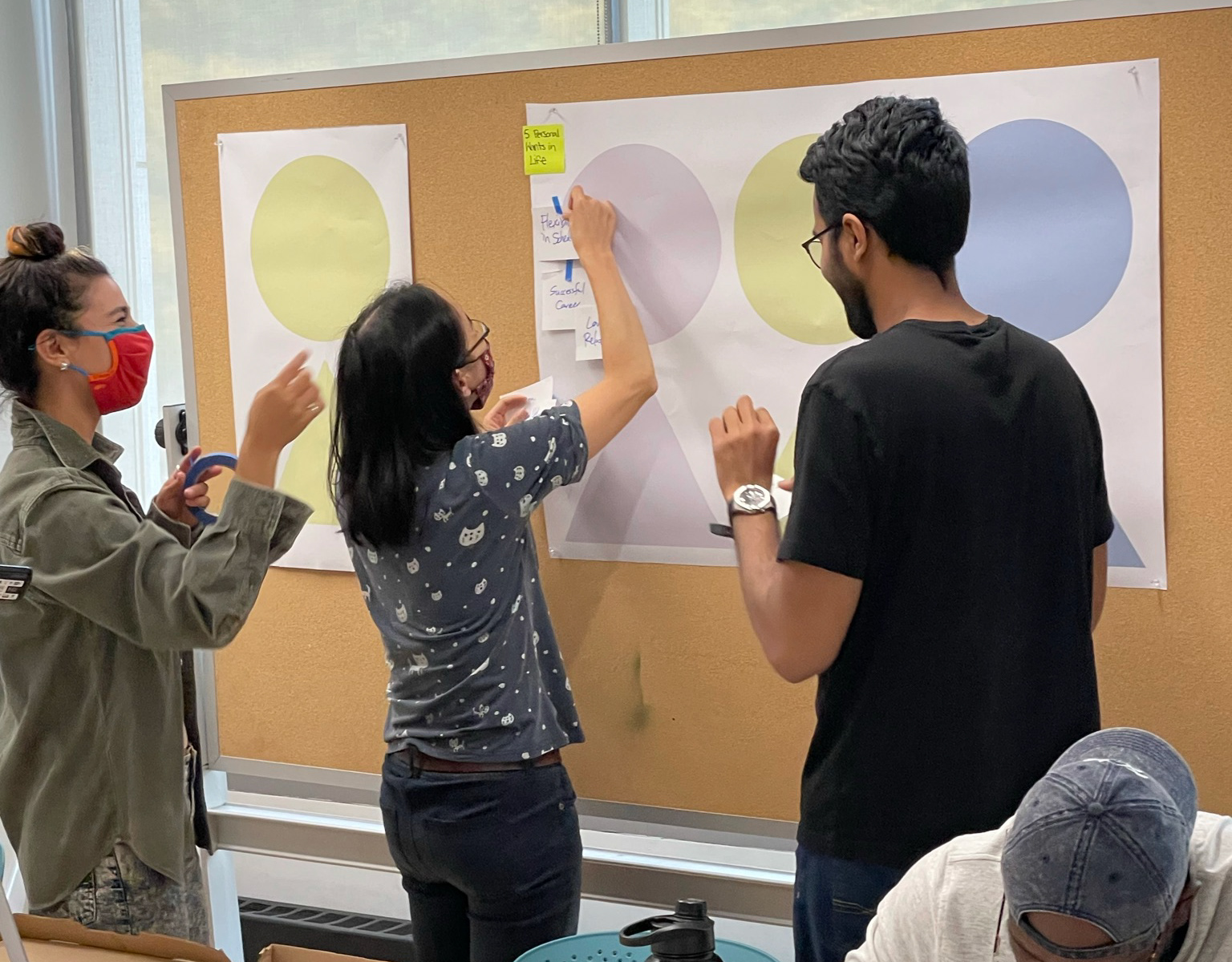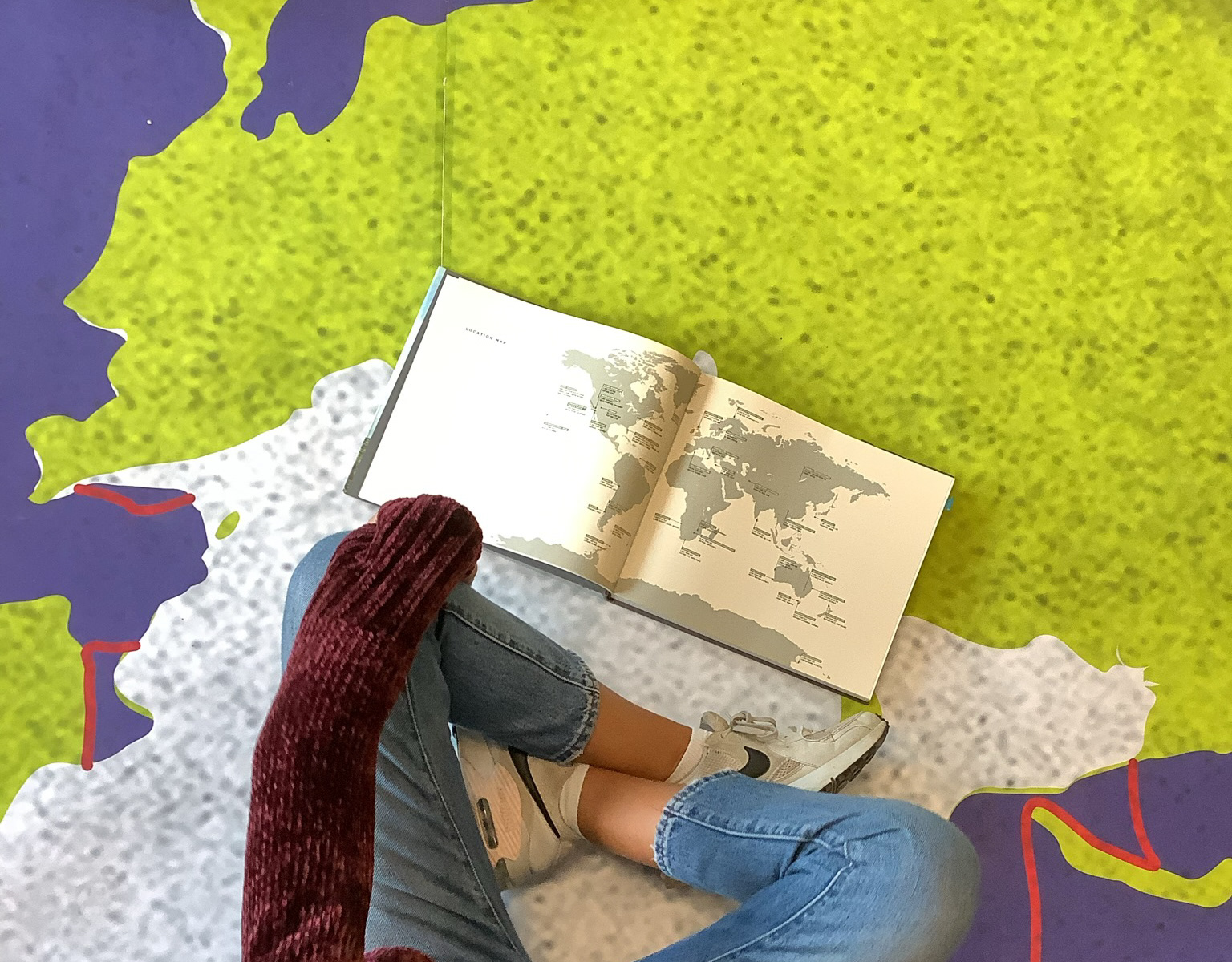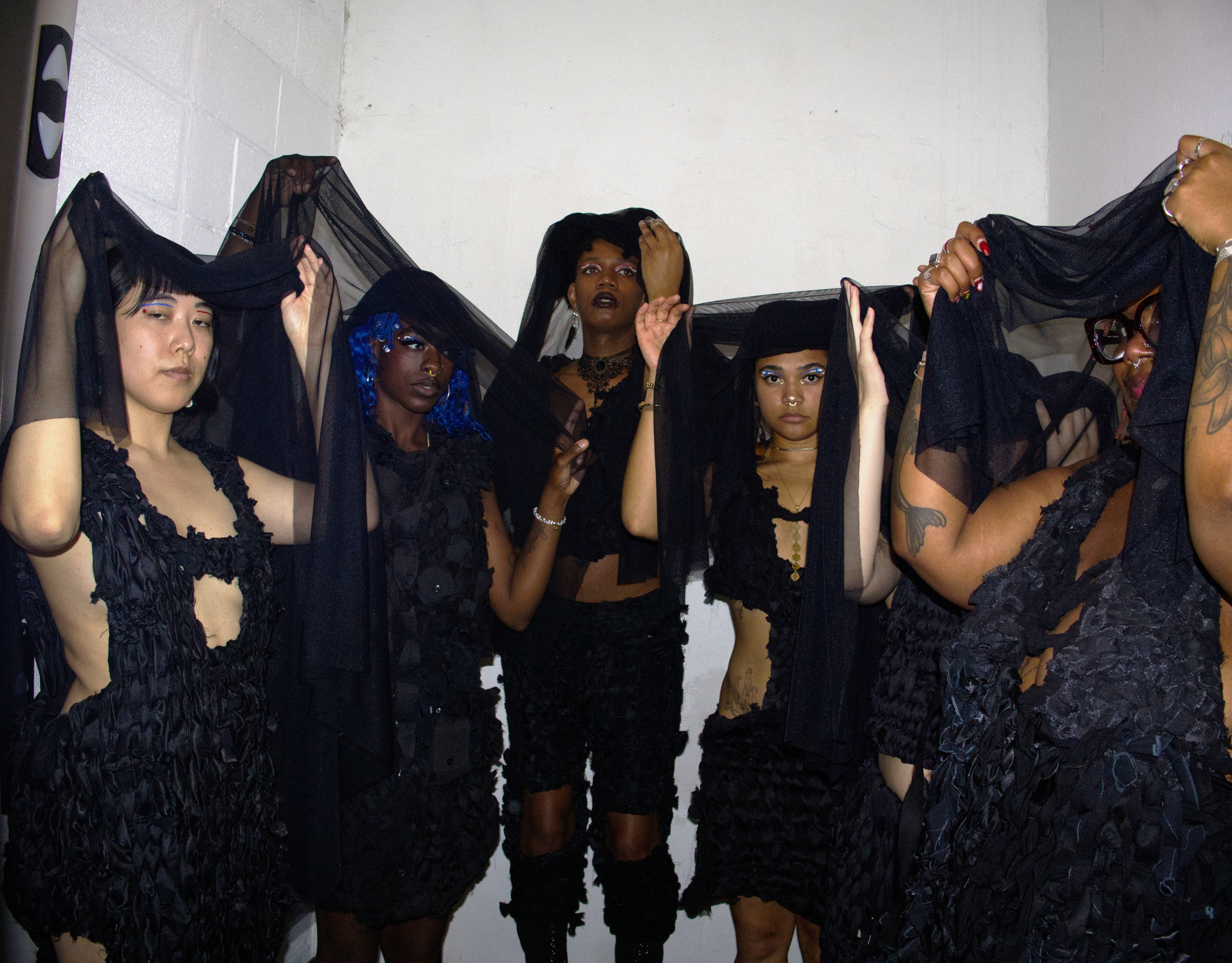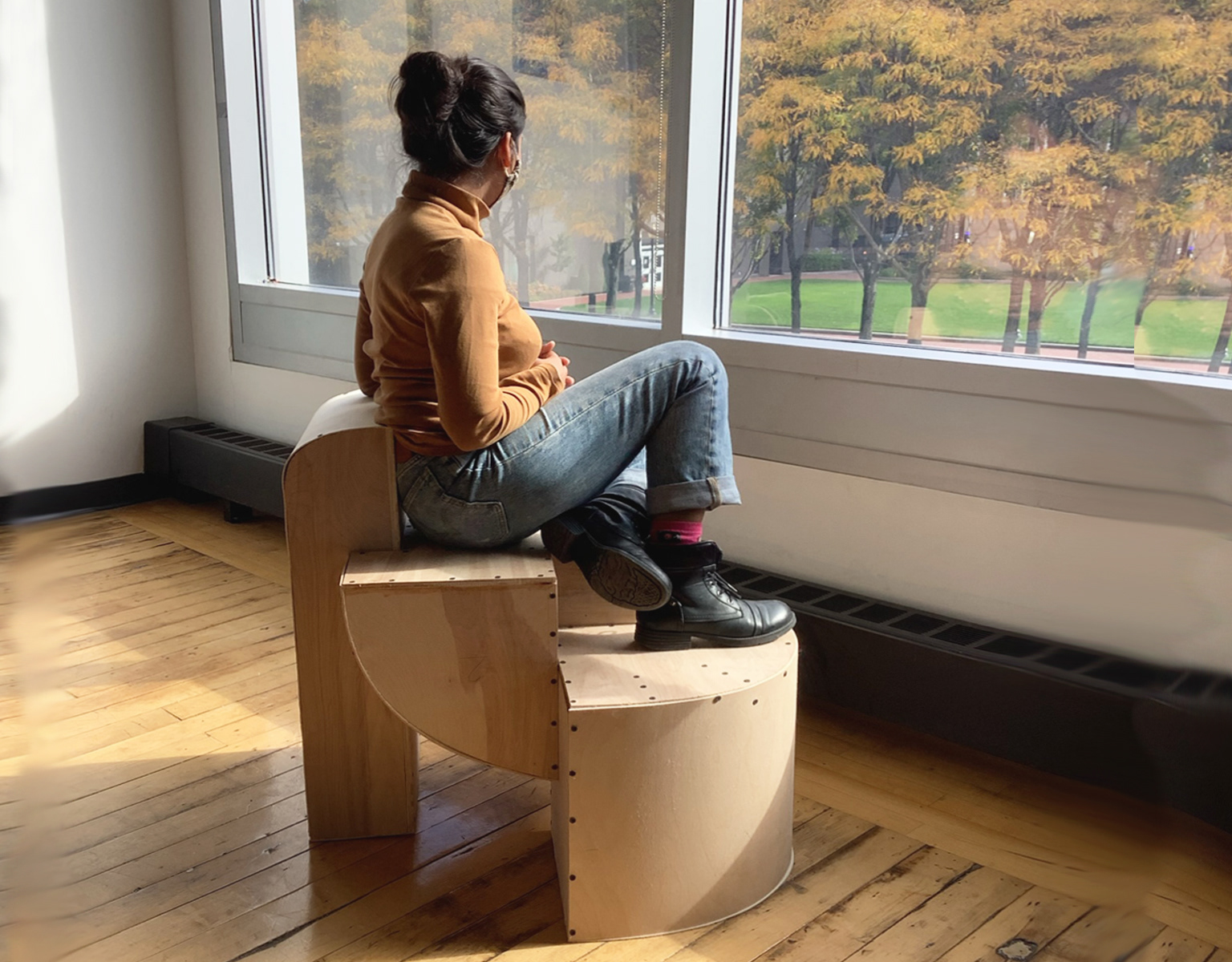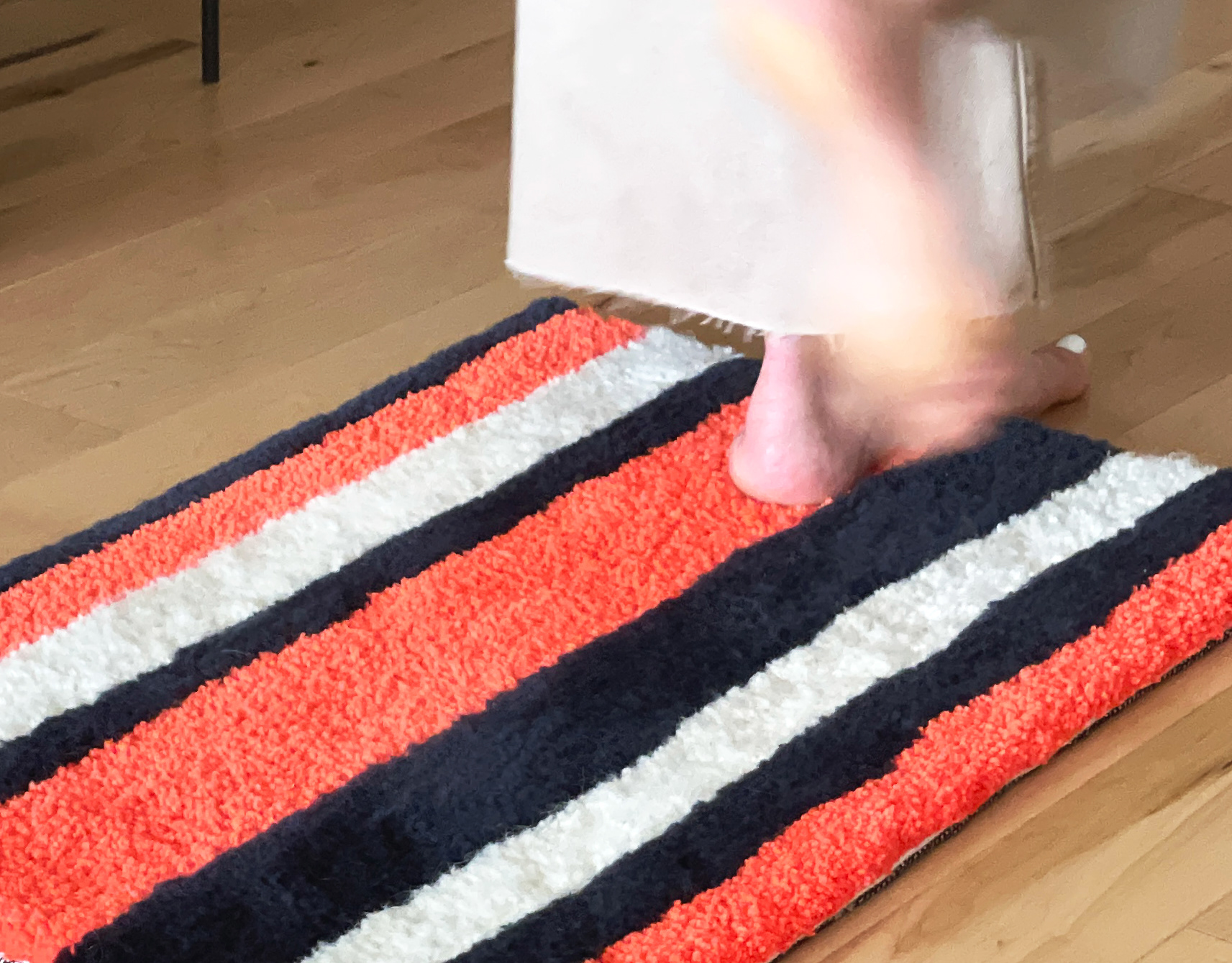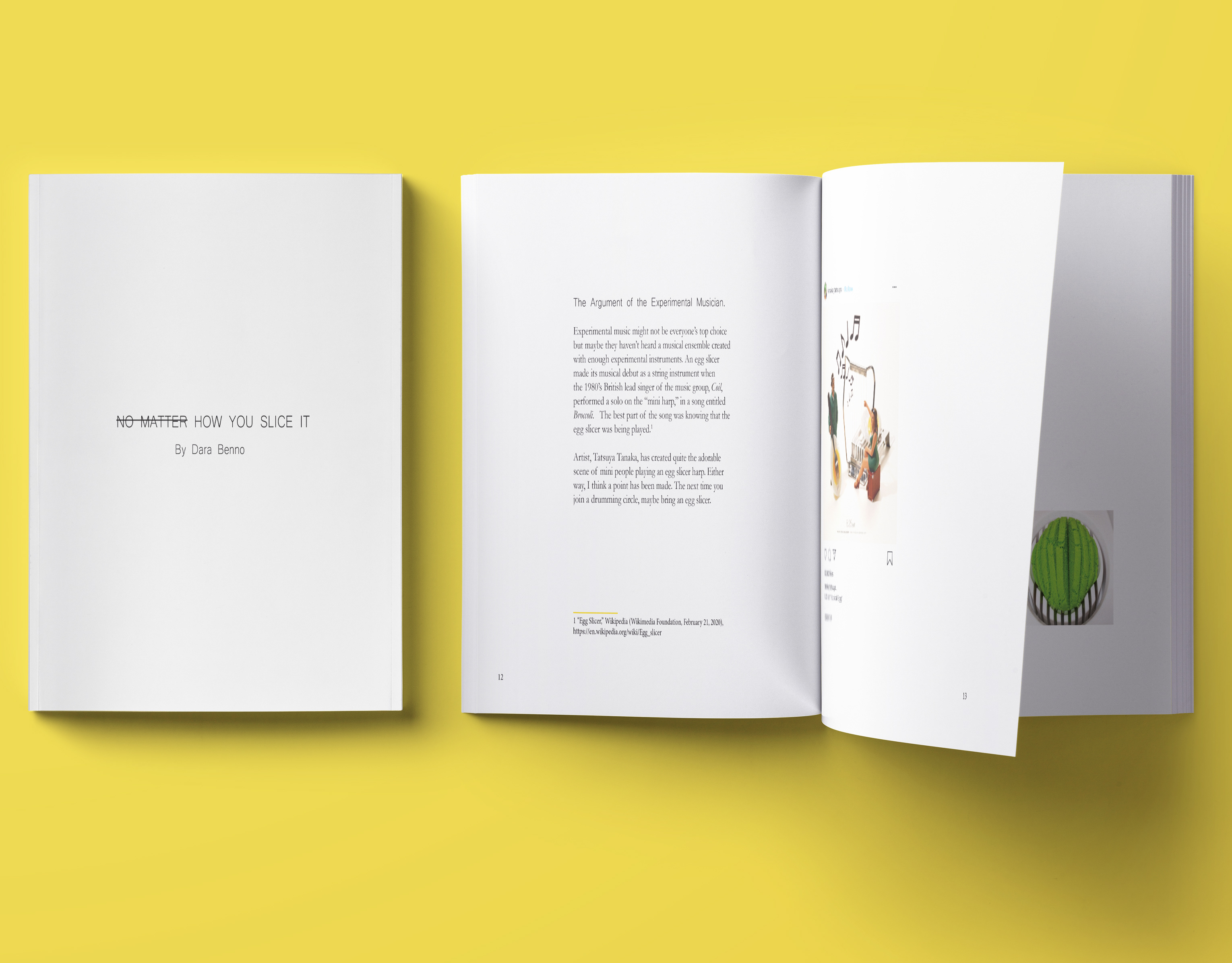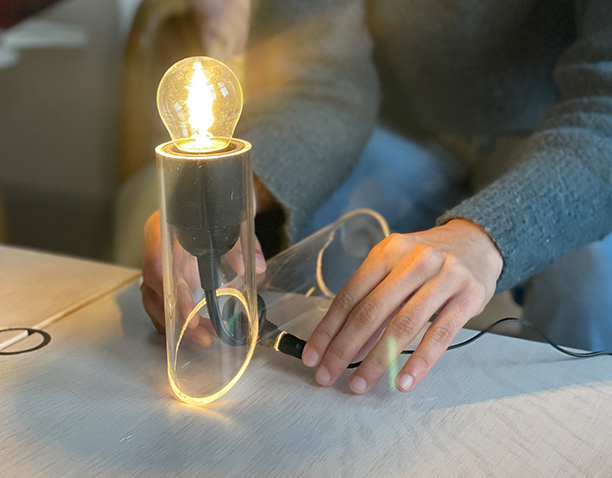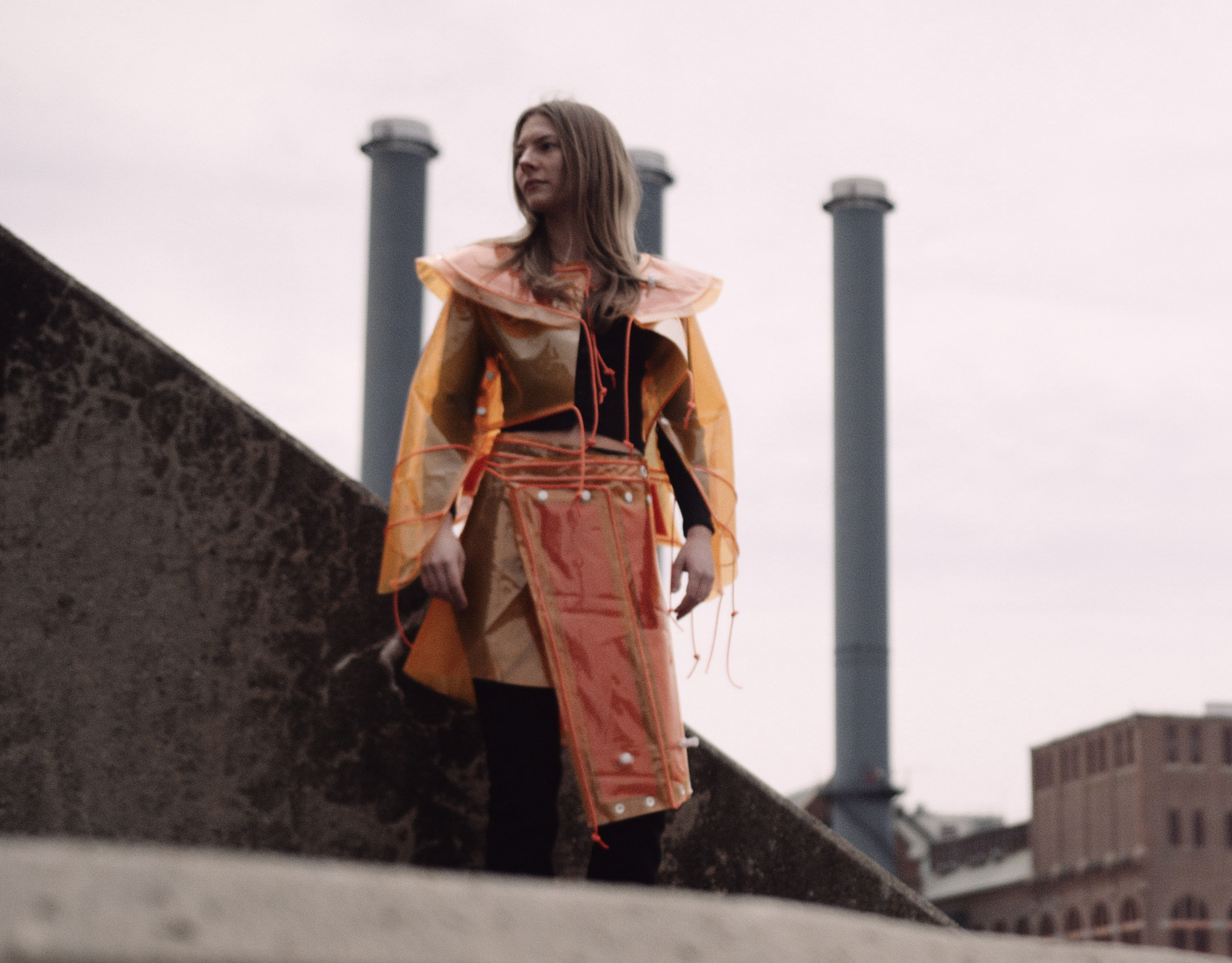How does history affect fashion, and what can we learn about both the past and the present from the garments we wear?
Whether we realize it in the moment or not, historical events affect design, the objects we interact with, and what we put on our bodies. Pockets, for example, have a fascinating history and evolution — from the 13th Century when men and women were equal in terms of pockets, wearing pockets on a string around the waist and accessing them through slits in the sides of clothing, to the 17th Century when male garments started to include sewn-in pockets but women's garments were disregarded for this innovation. Due to layers of clothing for women of the time, pockets were inaccessible. By the 18th Century, reticules became popular for women due to a shift to slim-fitting clothing. Once men went to war in the 20th Century, women got pockets back, showing the value of these built-in accessories for a working woman. These days, I would say we may be back to square one with equity, but square one was pretty equitable, so we're back to mostly nothing when it comes to mainstream garments.
This design reinvents the pocket and thereby reintroduces utility into fashion in an equitable, stylish, and user-friendly way that doesn't rely on the design of the pants, shorts, skirt, or dress to determine whether one is deserving of pockets as a — dare I say — tool.
Utility Garment modeled by Ann Dinh
Pocket compartments and variability
Challenge
Covid19 isolation fashion (and frustration)
During a time when Covid19 was just getting started and quarantine was in full effect, I couldn't help but wonder how isolation would affect how we live our lives, and in turn, how the design of objects and wearables would start to transform to suit our new circumstances, aka our "new normal."
How might the global pandemic change our relationship with clothing as a society and on an individual level? Will there be material and design regulations due to safety concerns? Will certain styles and solutions be dismissed once this major historical event passes? Or will trends develop and lead to lasting change?
Research + Insights
When looking back at the history of fashion in particular, we can see interesting trends that emerged based on major, public health crises. During the smallpox epidemic in 1562, white, lead-based face paint (makeup) was popularized by Queen Elizabeth. Along similar lines, the wearing of wigs was adopted during the spread of Syphilis in Europe in the 16th century.
Taking a specific look back at the evolution of garments from the 1920s to the 1950s, during the high point of housewife fashion (read: those in isolation), garments were designed and worn to fit a particular role and lifestyle. House dresses were aimed at combining fashion and purpose. These lightweight garments were not only comfortable but also stylish, incorporating pockets and patterns into their designs, intentionally considering usability and longevity.

Groom, D. (2023, February 24). Deathly white - the truth behind queen Elizabeth I’s “White clown mask.” Tomorrow Magazine. https://tomorrowalgarve.com/feb-2022-deathly-white/

CBC/Radio Canada. (2020, November 22). From hard pants to consumptive chic: How pandemics influence fashion | CBC News. CBCnews. https://www.cbc.ca/news/canada/newfoundland-labrador/apocalypse-then-pandemic-fashion-doomed-beauty-1.5808703
Opportunity

Sketch 1 of imaginative PPC in a fashion magazine.

Sketch 2 of imaginative PPC in a fashion magazine.

Sketch 3 of imaginative PPC in a fashion magazine.

Exercise for others to imagine PPC of the future. Examples of 3 submissions in bottom right.
Over time, it is clear that fashion evolves not only based on lifestyle but is also influenced by historical events. To dive deeper into an exploration of possible futures and the evolution of garments and wearables, I imagined what fashion in isolation could look like today, tomorrow, and moving forward. I invited others to participate in the exercise as well, asking what Personal Protective Clothing (PPC) might look like based on speculative, future regulation, and in consideration of purpose, use, material, and a new design standard.
As I moved into a rapid prototyping phase of this speculative PPC world, I created some removable pockets that could act as washable hand coverings, providing a barrier when touching doors and other shared surfaces. In this speculative design, the customer would be able to order pocket collections that attach to the pants they already own, or fashion brands could offer additional pockets when purchasing a garment.
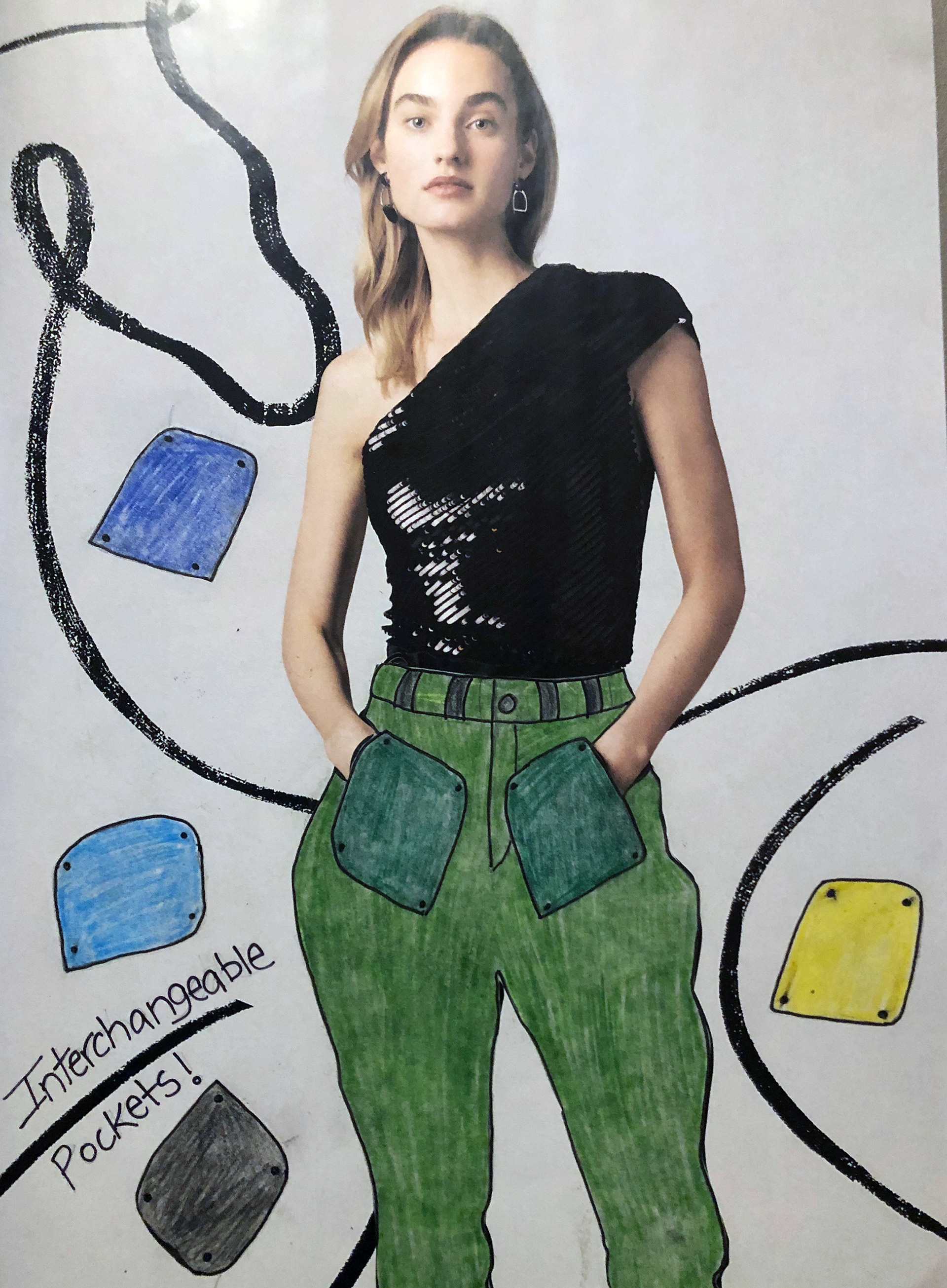
Sketch of imaginative PPC in a fashion magazine.
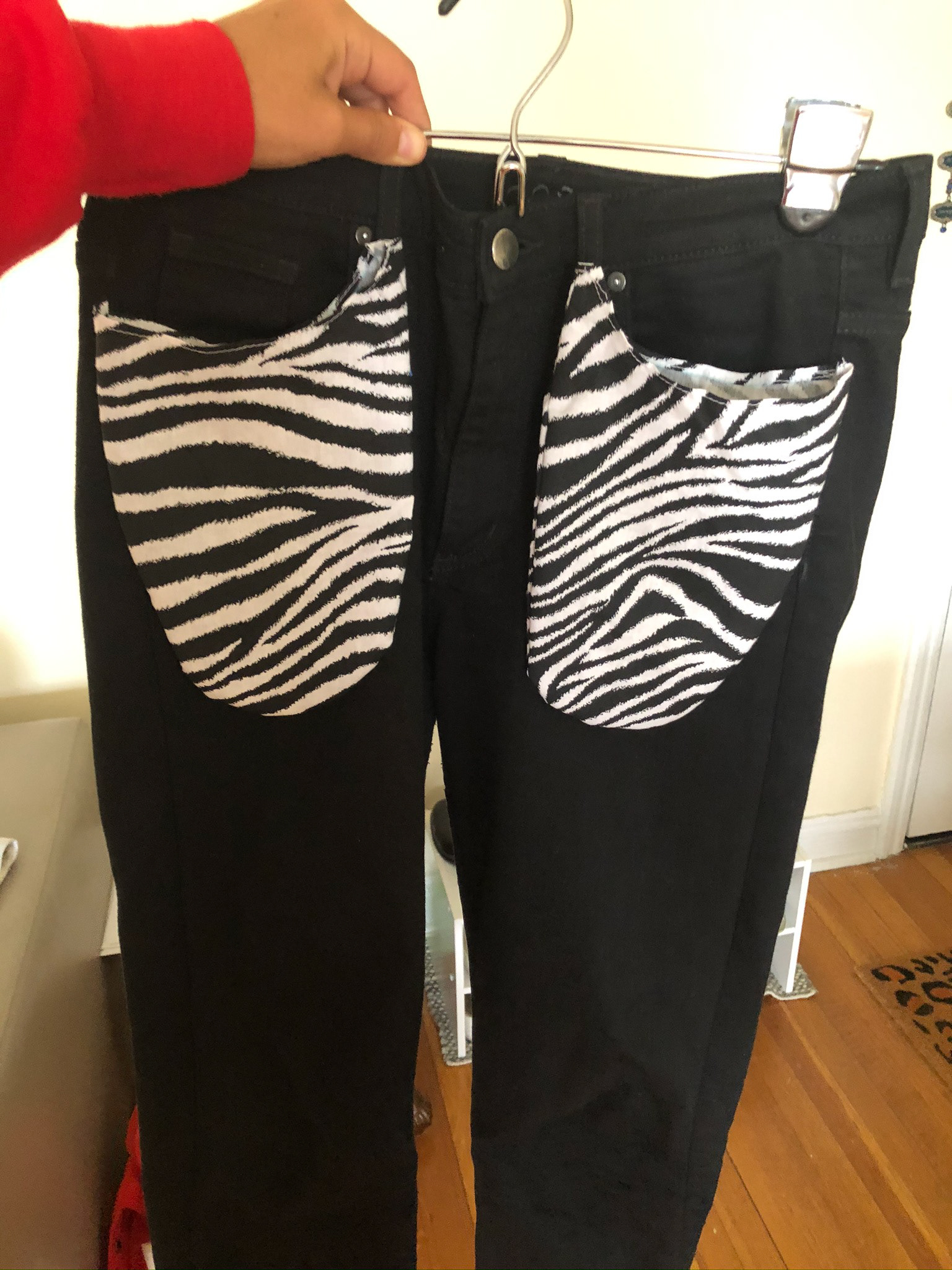
Rapid prototype of interchangeable pockets - set #1
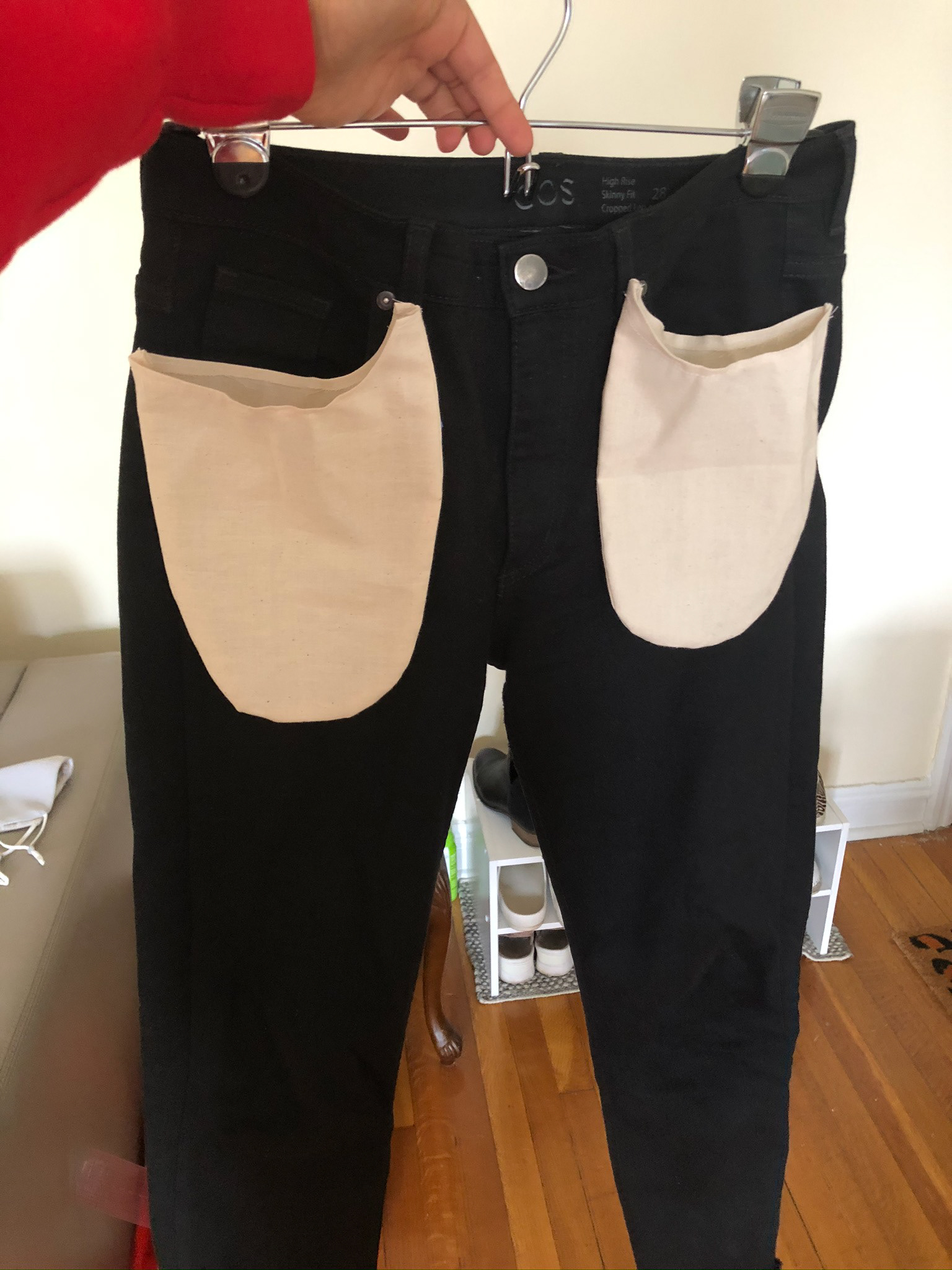
Rapid prototype of interchangeable pockets - set #2
Design Outcome
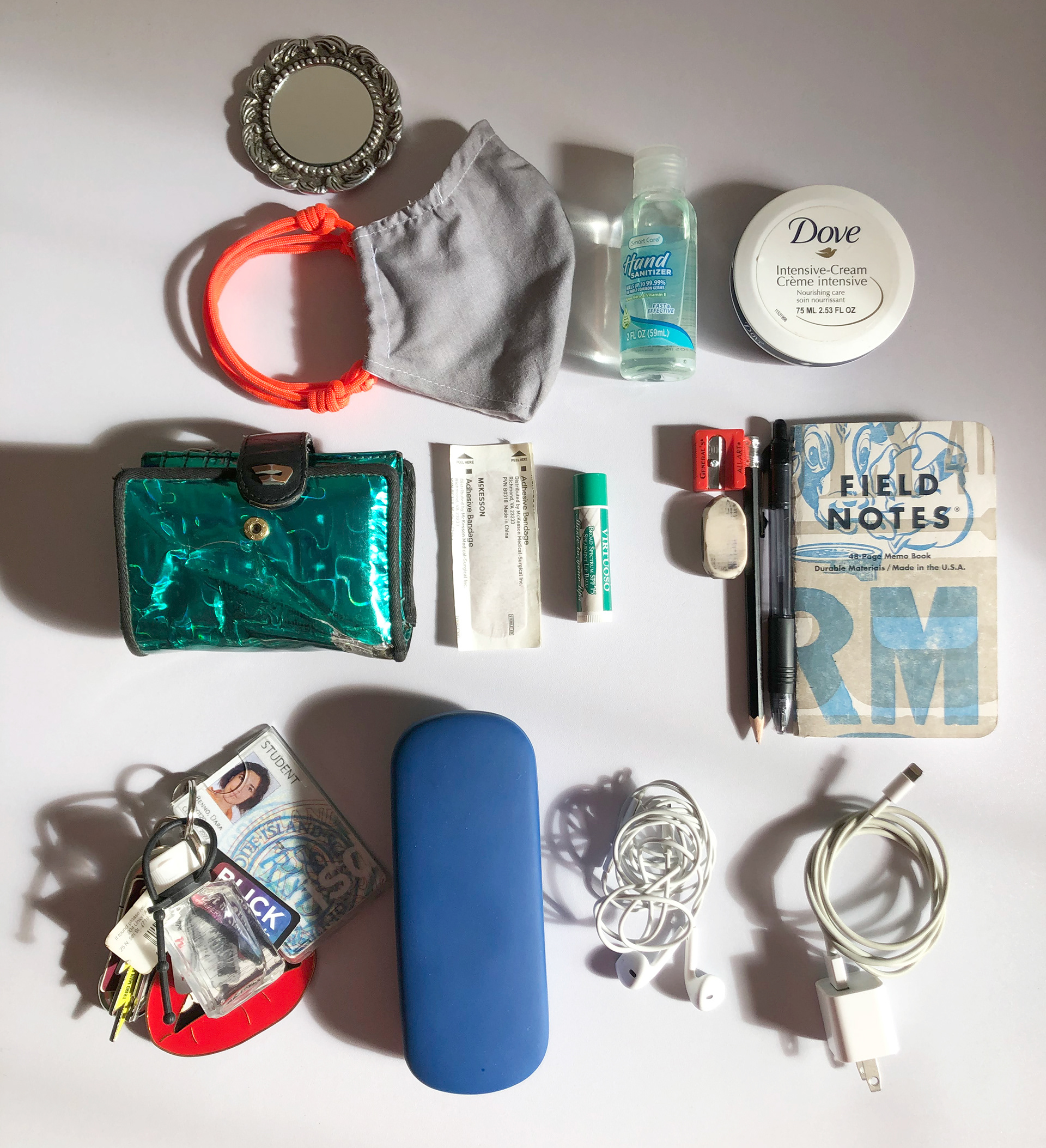
Mapping everyday belongings - Person #1
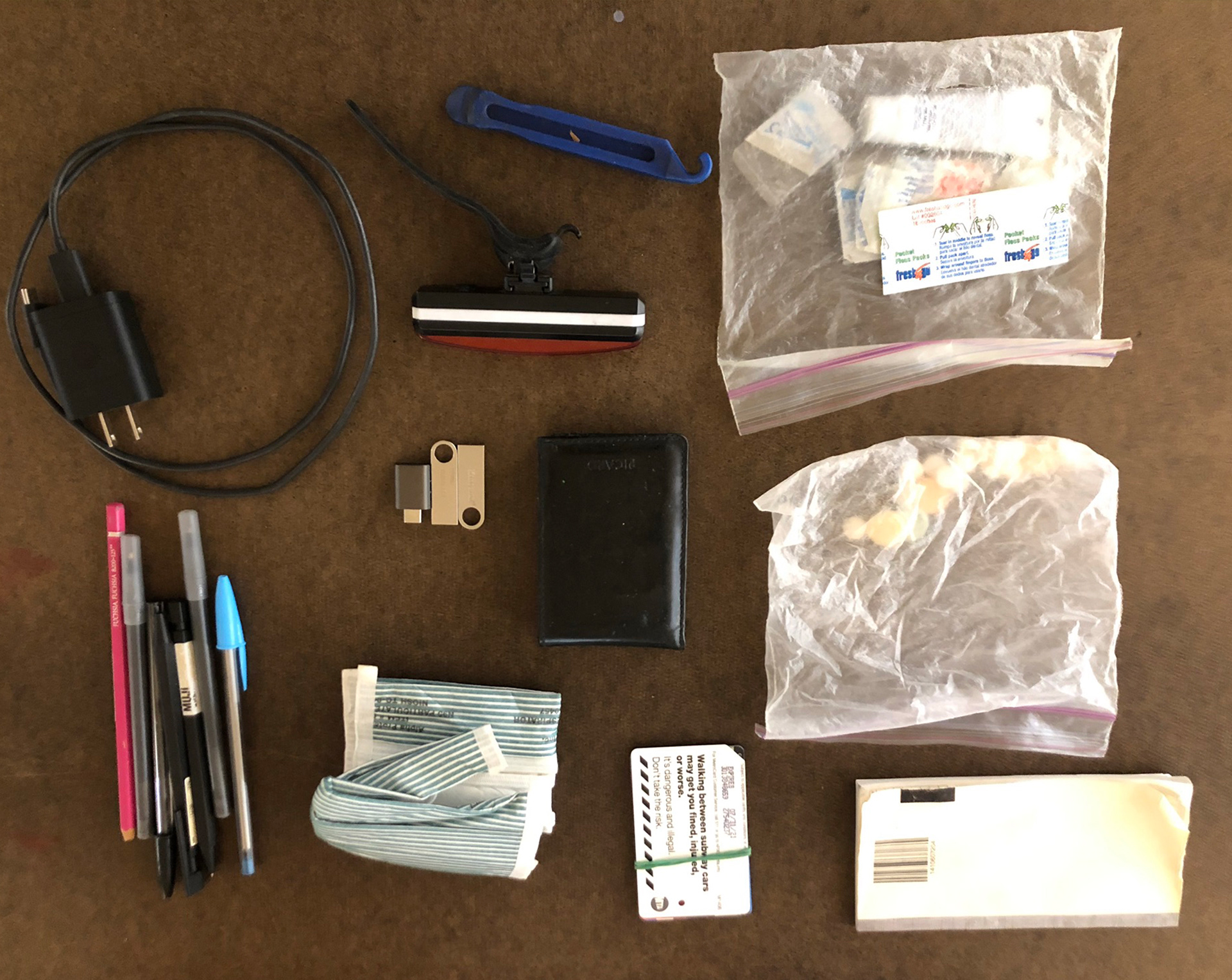
Mapping everyday belongings - Person #2

Mapping everyday belongings - Person #3

Mapping everyday belongings - Person #4
With pockets as a design focus, I pivoted back to research in order to learn how pockets came to be, quickly spiraling down a rabbit hole of their gendered history and fixating on the need to first and foremost design an equitable garment. The design process can be an amazing rollercoaster of discovery, twists, and turns. I feel fortunate that this design took me for such an enlightening ride that inspired a discursive piece around the herstories that garments can tell. In order to create a garment that also addressed my initial question, I turned back to wondering what people carry with them during a global pandemic and how I might be able to design pockets to hold new necessities. I asked others to photograph what they take with them in their daily lives and discovered that due to protective gear and preventative care, we are now carrying around more items of necessity on our person than we had previously (hand sanitizer, masks, phones, etc.).
Based on my interviews and mapping of daily belongings, the final design incorporated a variety of pocket sizes and compartments as well as adjustable straps (one-size fits all), and the option to unhook or disconnect the pockets altogether. A pocket on the interior of the bodice can hold discrete items or function as the sole pocket when hanging pieces are removed. Additional features include a special compartment for a mask, sections to hold smaller items like keys, hand sanitizer, headphones, etc, and a slot for a phone. The garment can also be worn over or under a shirt, allowing the wearer to choose if they would like to highlight the design or have it blend in with their look.

Garment hang tag - front

Garment hang tag - inside

Garment hang tag - back
Utility Garment in use showing functionality of two sample pockets. Modeled by Ann Dinh

Initial Sketch

Color Studies

Prototyping
User testing
Utility Garment modeled by Ann Dinh
